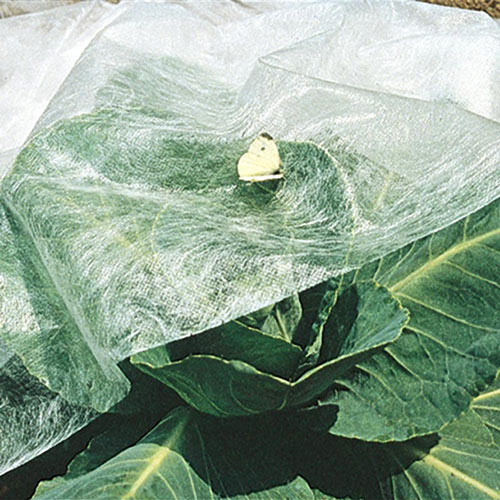Can Invasive Asian Ladybugs Control Indoor Plant Pests
-
Helpful Products from Gardens Alive!
-
 Pot Stickers - Insect Glue Trap
Pot Stickers - Insect Glue Trap -
 Super-Lite Insect Barrier - Lightweight Row Cover
Super-Lite Insect Barrier - Lightweight Row Cover
Q. I don't yet have a garden (maybe next year--if my two-year-old will allow it!). I do have about 30 houseplants, plus herbs and some experiments that are going fairly well—like avocado and mango pits that I've grown into small trees. I grow it all indoors in the winter and put some plants out for the summer. This year, they got a huge infestation of aphids. I read an article that says ladybugs eat aphids, and shortly afterwards found a lot of ladybugs swarming on my deck windows. Thinking I had an easy solution to the aphid problem, I took some inside and put them on my plants. Then it hit me that I should probably have checked first to see if lady bugs are dangerous to humans, homes and so on. So: how much trouble am I in? Will I be able to get rid of them after they munch the aphids? Do they bite? Why are so many of them on my deck in the first place?
- ---Karina In Laval, Canada (just Northwest of Montreal)
A. She almost certainly has what are commonly called "multi-colored Asian ladybugs" crawling all over her home, and research we did a few years back revealed that they DO 'bite'! It's just a little 'bite', not a sting and it isn't dangerous; but these insects can make you uncomfortable three different ways.
First, their legs come to such a point that people report a prickling sensation when a lady walks across their bare skin. Second, they actually do seem to deliver a small bite that's mildly painful, but non-toxic; just an annoyance really. And if you touch or startle them, they can also exude an irritating liquid out of their rear end. That liquid stinks, stains surfaces and can cause a mild allergic reaction. And these ladybugs are known to invade homes by the thousands in the fall, making them kind of pestiferous.
But our listener's original instincts are also correct. Ladybugs in general are voracious predators of aphids and other soft-bodied pests, and this Asian species—also known as the Halloween ladybug, because of the time of year they tend to break into people's homes—may be the most voracious predator of the entire family. That's why they were originally collected in Asia and released in the United States—to try and naturally control aphids in agricultural settings.
Those first releases—which took place a hundred years ago—were considered failures. But then the insects starting showing up in the US in large numbers in the 1980s, and Michigan began reporting large numbers in the 90s. Smart money says that some of the Michiganonians just kept flying North.
So: are they good or bad?
It's a mixed bag. They are great at controlling aphids, but many entomologists feel that they're displacing native ladybugs, much the way introduced praying mantises have replaced a lot of our native American species. And unlike native ladybugs, this Asian species swarm on the South facing sides of homes in the fall looking for ways to get inside for the winter, just like stinkbugs and other annoying 'home invading insects'.
But these ladybugs (which like the entire genus, aren't true bugs; they're in the beetle family, as in 'lady beetles') don't hibernate very deeply and tend to wake up on warm sunny days, which contributes to both their potential annoyance and usefulness.
If our listener wants to try putting hers to work, I'd suggest spritzing the infested plants with lots of water so that there's droplets on all the leaves, very carefully spreading the ladybugs on the wet plants and then covering individual plants or groupings with floating row cover—those spun fabric blankets that are used to protect plants from insects and light frosts outdoors.
Without some sort of barrier, the ladybugs would just fly all over the house. But if you contain them in a warm room with a water source and prey, they should do what comes naturally. If you get the conditions right, they might even mate—and their weird little larval forms are even more voracious predators of aphids than the adults.
Now they're strongly attracted to light, so they're always going to migrate towards whatever windows or artificial lights that are keeping these indoor plants alive—so you want to make sure that your screening is in especially good shape in those areas to keep them confined. And I would mist the plants daily; ladybugs are going to be healthier and more active if the plant leaves are wet down regularly.
And if any escape from their plants, get one of those long-handled 'bug vac' things and capture the strays promptly. Then you can sleep tight and not let the lady bugs bite!
-
Helpful Products from Gardens Alive!
-
 Pot Stickers - Insect Glue Trap
Pot Stickers - Insect Glue Trap -
 Super-Lite Insect Barrier - Lightweight Row Cover
Super-Lite Insect Barrier - Lightweight Row Cover







 Gardens Alive! & Supplies
Gardens Alive! & Supplies




